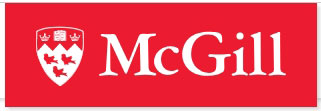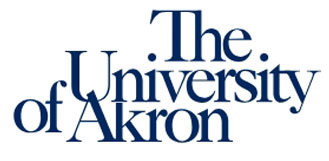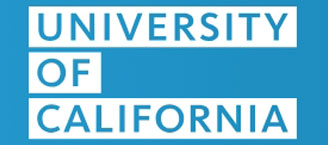Antibody-Drug Conjugates (ADCs) are now a new and powerful therapy in contemporary medicine and the mainstay of cancer therapy and drug discovery. ADCs are able to combine the selective ability of monoclonal antibodies with the powerful cytotoxicity of small molecules to achieve targeted elimination of cancer cells with minimum disruption of healthy tissue. But as great as they are, the growth of the ADC market has been a very challenging process. In this article, the current scenario, market trends, prospects, and threats of the ADC market are discussed in detail to provide an in-depth insight to market players and interested parties.
Antibody-drug conjugates (ADCs) are new biopharmaceuticals made of three ingredients: a monoclonal antibody, a cytotoxic drug, and a linker. The monoclonal antibody is the "guidance system", it binds to specific antigens on the surface of cancer cells. The cytotoxic agent is the "warhead" that destroys cancer cells. The linker is the "bridge" between the antibody and the drug, and it releases the payload upon reaching the cancer cell of interest. This structure allows ADCs to attack the cancer cells in a very specific manner while minimizing damage to normal cells, which leads to better therapy and reduced side effects.
 Fig. 1. Key components of an ADC (Drug Discov Today. 2014, 19(7): 869-8).
Fig. 1. Key components of an ADC (Drug Discov Today. 2014, 19(7): 869-8).
ADCs originated in the early 20th century when scientists first tried to mix toxins with antibodies to cure cancer. But due to technical issues and the absence of suitable linkers, early ADC research did not fare well. It took until the late 20th century for major breakthroughs, driven by rapid advances in biotechnology (monoclonal antibody technology and linker chemistry). The first ADC drug Mylotarg (gemtuzumab ozogamicin) was approved by the FDA in 2000, formally heralding the ADC fad. Since then, technological advances and increased clinical research has generated new ADCs, including Adcetris (brentuximab vedotin) and Kadcyla (T-DM1), to give cancer patients new hope.
Antibody production, drug development, conjugation reaction, purification, and quality control are some of the steps that are required to manufacture ADCs. Antibody production forms the basis of ADC manufacturing, and it is usually performed through massive methods of mammalian cell culture. The process of drug synthesis includes choosing cytotoxic drugs and linkers according to the ADC's design specifications. It is primarily through conjugation reactions (that is, the central manufacturing process for ADCs) that the antibody-to-drug ratio and reaction conditions need to be accurately controlled. Purification and quality assurance are essential for the stability of the ADC product, with high-throughput chromatography and analytical equipment monitoring purity, activity and stability.
As the ADC market becomes more expansive, ADC service providers have more responsibility. CROs and CDMOs provide everything for ADC companies, from R&D to production. Preclinical research, clinical trial planning and management are mainly performed by CROs which accelerates the R&D cycle for ADC companies. CDMOs are specialists in the creation of production line, contract manufacturing and quality control, offering ADC manufacturers cost-effective production solutions. ADC businesses can work with CROs and CDMOs to accelerate R&D work, eliminate development cost and risk, and accelerate time to market by outsourcing the business to them. As an ADC service provider, BOC Sciences provides complete process manufacturing services such as toxin synthesis, linker design and ADC conjugation. We have modern production equipment and tight control system to meet clients' cGMP production requirements.
On January 17, the U.S. FDA approved Datroway (Dato-DXd), an ADC co-developed by AstraZeneca and Daiichi Sankyo. It is indicated for the treatment of adult patients with unresectable or metastatic hormone receptor (HR)-positive, HER2 -negative breast cancer who have previously received endocrine therapy and chemotherapy. According to AstraZeneca's press release, this is the first approval for Datroway in the U.S. and the third globally approved TROP-2 ADC. As of January 18, 2025, a total of 17 ADC drugs have been approved worldwide, several of which have demonstrated promising clinical efficacy and are expected to become blockbuster drugs. According to Frost & Sullivan data, the global ADC market is projected to grow to $64.7 billion by 2030 (+23% CAGR), with a compound annual growth rate (CAGR) of approximately 28.8% from 2024 to 2030. The ADC industry is rapidly evolving. Additionally, the global ADC CRDMO (Contract Research, Development, and Manufacturing Organization) market is expected to experience robust growth, driven by strong downstream demand. Frost & Sullivan data estimates the global ADC CRDMO market will reach $11 billion by 2030, with a CAGR of approximately 27.2% from 2024 to 2030. The outsourcing rate is projected to reach 70%-80%.
 Fig. 2. Antibody drug conjugate market revenue 2023 to 2033.
Fig. 2. Antibody drug conjugate market revenue 2023 to 2033.
The ADC market is primarily focused on oncology treatments, including lymphoma, leukemia, multiple myeloma, breast cancer, head and neck cancer, urothelial carcinoma, and more. In recent years, the indications have gradually shifted from hematologic cancers to solid tumors. For example, Adcetris is primarily used for treating Hodgkin lymphoma and systemic anaplastic large cell lymphoma, while Kadcyla is mainly used for treating HER2-positive breast cancer. In addition to cancer treatment, the application of ADCs in areas such as autoimmune diseases is also being explored, with the potential for further market expansion in the future. Geographically, North America and Europe are currently the primary consumer regions for the ADC market, mainly due to their advanced healthcare systems, strong innovation capabilities, and high acceptance of new drugs. However, with the rise of emerging markets, particularly in countries like China and India, where the demand for ADC drugs is increasing, the Asia-Pacific region is becoming the fastest-growing area for the ADC market. It is expected that in the coming years, the Asia-Pacific region will play an increasingly important role in the global ADC market.
Currently, the key players in the global ADC market include large pharmaceutical companies such as Seagen, Roche, AstraZeneca, and Pfizer. These companies have extensive experience and strong technical capabilities in ADC research and development and production. Additionally, some emerging biotechnology companies are continuously entering the ADC market, attempting to establish a presence in this field through innovative technologies or collaborative research and development.
| Company | Description |
| Daiichi Sankyo | Daiichi Sankyo is a global pharmaceutical company headquartered in Japan with significant influence in the ADC field. Its collaboration with AstraZeneca resulted in Enhertu (trastuzumab deruxtecan), a breakthrough ADC for HER2-positive cancers, approved for multiple indications, including breast and lung cancer. With a high drug-to-antibody ratio (DAR) and potent cytotoxic payload, Enhertu has demonstrated remarkable efficacy and survival benefits in clinical trials. |
| AstraZeneca | AstraZeneca is a leading global pharmaceutical company specializing in oncology, biopharmaceuticals, and rare diseases. Its partnership with Daiichi Sankyo produced Enhertu, now a flagship ADC in the market. Additionally, AstraZeneca is developing other ADCs and announced a $1.5 billion investment in November 2024 to build its first commercial-scale ADC manufacturing facility in Singapore, slated for completion by 2029. |
| Seagen | Seagen is a pioneer in the ADC field, focusing on the development and commercialization of cancer therapies. Its product Adcetris (brentuximab vedotin) was the first FDA-approved ADC, used to treat Hodgkin lymphoma and systemic anaplastic large cell lymphoma. Seagen has also collaborated with companies like Merck to develop Padcev (enfortumab vedotin) for advanced urothelial cancer treatment. |
| Roche/Genentech | Roche and its subsidiary Genentech hold a prominent position in the ADC market. Their product Kadcyla (trastuzumab emtansine) was the first approved ADC for HER2-positive breast cancer treatment. With strong R&D capabilities and market influence, Roche continues to lead in the ADC field and collaborates with other companies to advance ADC research and clinical applications. |
| Pfizer | Pfizer, one of the world's largest pharmaceutical companies, has a significant presence in the ADC field. Its product Mylotarg (gemtuzumab ozogamicin) was the first FDA-approved ADC, designed for acute myeloid leukemia treatment. Pfizer is also developing bispecific antibody ADCs to further expand its technological footprint in the ADC domain. |
| AbbVie | AbbVie expanded its ADC portfolio through the acquisition of ImmunoGen, gaining Elahere (mirvetuximab soravtansine), which is used for platinum-resistant ovarian cancer treatment. ImmunoGen's ADC pipeline includes IMGN-151 for ovarian cancer and pivekimab sunirine for rare hematologic malignancies. |
| Gilead Sciences | Gilead Sciences entered the ADC market by acquiring Immunomedics, gaining Trodelvy (sacituzumab govitecan), an ADC for triple-negative breast cancer. Trodelvy's approval marked a significant breakthrough in the treatment of breast cancer using ADCs. |
Cancer remains a major global public health challenge, with its incidence and mortality rates rising steadily. According to the World Health Organization (WHO), over 18 million new cancer cases are diagnosed globally each year, with lung cancer, breast cancer, and colorectal cancer being the most common types. As the number of cancer patients continues to grow, so does the demand for efficient and precise treatments, creating a significant market opportunity for ADCs. In recent years, emerging markets such as China, India, and Brazil have experienced rapid economic development and improvements in healthcare infrastructure, driving increased demand for innovative therapies. Data shows that the global ADC market has grown significantly, rising from $2 billion in 2018 to $10.4 billion in 2023, with a compound annual growth rate (CAGR) of 39.1%. Between 2023 and 2030, the market is projected to maintain a CAGR of 30.3%, reaching $66.2 billion by 2030.
The rapid advancement in linker technologies, toxin development, and antibody optimization has accelerated the development of ADC products. The growth in market demand, regulatory improvements, and the deep involvement of global pharmaceutical companies have collectively driven the rapid expansion of the ADC market, offering new opportunities for innovative therapies.
With the continuous advancement of biotechnology, new antibody technologies such as bispecific antibodies and nanobodies are emerging. These novel antibodies have higher targeting ability, affinity, and stability, which can further enhance the therapeutic efficacy of ADCs. For example, bispecific antibodies can bind to two different antigens simultaneously, enabling more precise targeted therapy; nanobodies, due to their smaller molecular weight, can better penetrate tumor tissues, improving the distribution efficiency of the drug.
Linkers and cytotoxic drugs are two key components of ADCs, and their performance directly impacts the efficacy and safety of ADCs. In recent years, researchers have developed a series of new linkers and cytotoxic drugs, such as cleavable linkers and novel anthracycline-based drugs. These new materials not only improve the stability of ADCs but also allow for more effective drug release upon reaching cancer cells, thereby reducing side effects and improving therapeutic outcomes.
With the widespread use of gene sequencing technology and the deepening research on biomarkers, personalized and precision medicine have become key trends in the future development of medicine. ADCs, as a precise targeted therapy, can be customized based on a patient's individual characteristics (such as tumor antigen expression levels and genetic mutations) to achieve optimal therapeutic effects. For example, by detecting the expression level of the HER2 gene, doctors can select ADC drugs like Kadcyla for HER2-positive breast cancer patients, thus enhancing the specificity and effectiveness of the treatment.
While ADCs hold immense potential in precision medicine, their development and production face numerous challenges. From early-stage drug screening and linker stability issues to large-scale production and cost control, each phase demands advanced technology and significant resources. Additionally, optimizing drug safety, immunogenicity, and toxicity selectivity are critical hurdles for achieving ADC commercialization. The increasing demand for more efficient conjugation technologies, safer toxins, and antibodies with lower immunogenicity underscores the multi-faceted challenges in ADC research and development.
ADC technology is poised for significant breakthroughs in the coming years. The emergence of novel antibodies, linkers, and cytotoxic drugs will provide more options and possibilities for ADC development. Technologies like CRISPR-Cas9 gene editing could further enhance ADC targeting and safety, while artificial intelligence (AI) and big data analytics will enable researchers to better understand ADC mechanisms and optimize development processes. The competitive landscape of the ADC market will also undergo profound changes. Large pharmaceutical companies are likely to expand their market share through mergers, acquisitions, and collaborations. Meanwhile, innovative biotech firms with flexible operations and cutting-edge technologies are expected to make a strong impact in the ADC sector. Additionally, as emerging markets rise, ADC companies must focus on global market strategies. Localized production and targeted marketing will be essential to meeting the needs of patients in different regions and driving ADC adoption worldwide.
** Recommended Products **
| Catalog | Name | CAS | Price |
| BADC-01599 | Anetumab ravtansine | 1375258-01-7 | Inquiry |
| BADC-01600 | Sirtratumab vedotin | 1824663-83-3 | Inquiry |
| BADC-01601 | Tusamitamab ravtansine | 2254086-60-5 | Inquiry |
| BADC-01594 | Labetuzumab govitecan | 1469876-18-3 | Inquiry |
| BADC-01597 | Ladiratuzumab vedotin | 1629760-29-7 | Inquiry |
| BADC-01602 | Trastuzumab deruxtecan | 1826843-81-5 | Inquiry |
| BADC-01604 | Disitamab vedotin | 2136633-23-1 | Inquiry |
| BADC-01605 | Telisotuzumab vedotin | 1714088-51-3 | Inquiry |
| BADC-01606 | Polatuzumab vedotin | 1313206-42-6 | Inquiry |
| BADC-01607 | Belantamab mafodotin | 2050232-20-5 | Inquiry |
Reference










